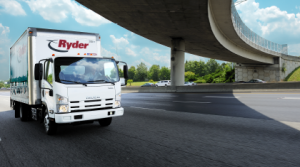How Driving Carbon Out of Your Supply Chain Can Drive Results
Like many companies, reducing your carbon footprint may be a key item on your corporate to-do list.
And one of the most overlooked opportunities to reduce environmental impact is in commercial transportation and logistics, and more specifically, in the vehicles that power your fleet.
With the cost of diesel hovering around $4 per gallon, rising fuel costs are the number one challenge facing commercial fleets. If you’re moving goods, being smart about fuel consumption delivers more than eco-benefits – it can have a major impact on your profit margins.
First, consider the environmental drivers for rethinking the vehicles in your fleet. In 2012, Forbes published an

Next, consider cost: a perennial concern for every business. The good news? Successful carbon-efficiency initiatives almost always deliver financial rewards.
Here are three actions you can take to cut costs and emissions by rethinking the vehicles in your fleet.
- Use new engine technologies and vehicles specified for optimum fuel efficiency. A better-equipped vehicle delivers improvements in both operating and environmental performance. When you’re specifying equipment, make sure you specify vehicles designed to maximize fuel efficiency and reduce emissions. As you replace older engines in your fleet, do so with newer, lower-emissions engines. Consider adding trailers configured with aerodynamic features and weight-saving designs that reduce fuel consumption. Follow guidelines provided by the Environmental Protection Agency’s SmartWay® Transport program and consider vehicles equipped with telematics technology to help reduce fuel consumption/costs.
- 2. Keep your vehicles maintained. It’s a given that quality preventive and ongoing maintenance optimize vehicle and fleet performance. Better-maintained vehicles are more efficient. Getting results means implementing rigorous preventive maintenance schedules for even the most routine care and checking tire conditions and inflation rates every time vehicles stop to refuel.
- Add alternative fuel and advanced technology vehicles to your fleet. Natural gas vehicles are built from the ground up to deliver better emissions performance than conventional diesel vehicles. A natural gas fleet can help you cut fuel costs, reduce your eco-footprint and tap into more predictable pricing. In addition to lowering fuel costs, natural gas vehicles can reduce well-to-wheel CO2 emissions by as much as 25% and are powered by a secure source of domestic energy (also one of the cleanest and quietest fuels on the market.) Natural gas isn’t the only way to go. Other options include electric and hybrid electric vehicles and vehicles powered by alternative fuel sources like ultra-low sulfur diesel or vehicles
There are other ways to reduce carbon emissions as well. For example, you can more precisely align inbound and outbound shipments, synchronize returns with optimized fleet use and arrange backhauls to offset transportation costs and minimize empty miles.
Many companies are realizing significant benefits by moving to dedicated fleets that allow them to control routes and minimize fuel consumption. For example, by doubling the size of its dedicated fleet and folding its LTL network into its FTL network, organic yogurt-maker, Stonyfield, reduced Co2 metric tons per product shipped by 58 percent, while expanding service, improving customer satisfaction and reducing costs. this is just one of many typical success stories. You can read the full case study here.
Interested in achieving similar results? To learn more about how you can improve carbon efficiency and reduce costs, download our Corporate Sustainability Report.
Download Now
[1] Environmental Defense Fund: Smart Moves. http://business.edf.org/sites/business.edf.org/files/smartmoves_07_screen.pdf

